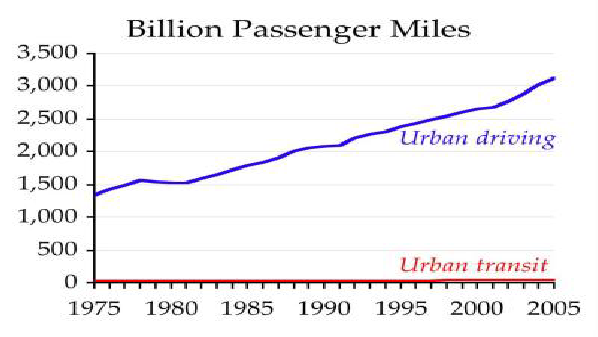No Light Rail in Vancouver!
Transit’s Market Share Shrinks a Little More

Now that the U.S. DOT has published 2005 data for transit (1.9 mb download) and Highway Statistics, we can expect to soon hear APTA crowing about how transit is capturing market share from the automobile. This, however, is just another lie your transit lobbyist is telling you.
According to the numbers, total transit trips grew by 2.7 percent over 2004 (NDTB,
table 19), while total miles of driving grew by just 0.8 percent (Highway Statistics,
table VM-
According to table VM-
In terms of passenger miles, and assuming an average of 1.6 occupants per auto, transit moved 1.51 percent of urban passenger travel in 2004, but only 1.49 percent in 2005. (US DOT’s National Household Travel Survey actually estimates an average occupancy of 1.63.)
Even if transit were growing faster than urban driving (as it has done in just nine of the last thirty years), it would take decades for transit to be a significant factor in urban areas (other than New York). If transit grew by an average of 2 percent per year and driving by just 1 percent, it would take more than 100 years for transit to reach 10 percent of urban passenger travel.

As shown in the above chart, transit is getting less and less significant all the
time. Yet this does not stop planners in Denver, Minneapolis-
3
Trackback • Posted in News commentary, Transportation
Reprinted from The Antiplanner